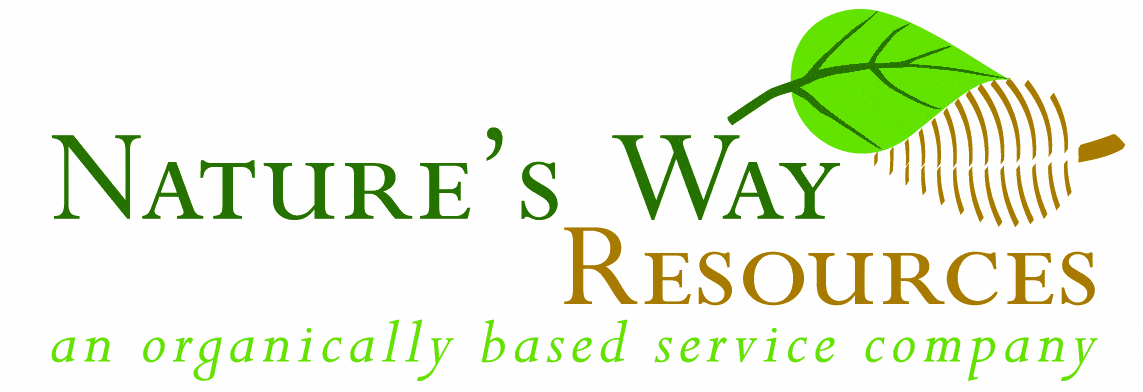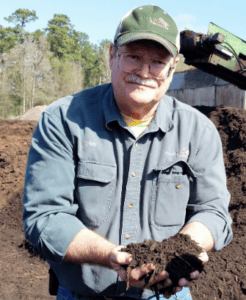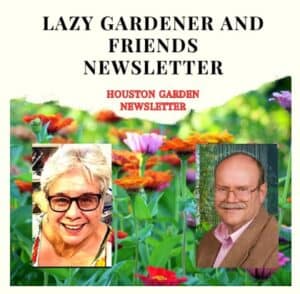 Nature’s Way Resources is proud to produce & email you this free weekly newsletter. We have no ads, but sponsors do graciously help support this project as a public service. Please note their names below & show your gratitude for this free service by patronizing their businesses! To become a sponsor, call (936) 273-1200
Nature’s Way Resources is proud to produce & email you this free weekly newsletter. We have no ads, but sponsors do graciously help support this project as a public service. Please note their names below & show your gratitude for this free service by patronizing their businesses! To become a sponsor, call (936) 273-1200
Nature’s Way Resources owner John Ferguson, “The Lazy Gardener” Brenda Beust Smith and Pablo Hernandez welcome your feedback and are so grateful to the many horticulturists who contribute their expertise
Click here to join our email list
CLICK HERE for PDFs OF PAST LG&F NEWSLETTERS
“It was one of those March days when the sun shines hot and the wind blows cold: when it is summer in the light, and winter in the shade.” — Charles Dickens, Great Expectations
Think ROOTS! when adding new plants
BY BRENDA BEUST SMITH
Although normally I write mainly to experienced gardeners — who know all the basic rules, but are mostly interested now in expanding their horizons — today’s column is aimed at newcomers (and the new-to-gardening) who have probably already filled beds with gorgeous colorful plants now in nurseries.
That’s great, and hope recent weather fluctuations haven’t affected the plants. If they have, don’t worry. Most have probably been forced to produce flowers with bloom stimulators. That’s understandable with our proliferation of HOA regulations on how front yards should look. Weather fluctuations may trigger some wilting.
In March, warm, sunny days do happen. But they do NOT mean Spring is here to stay. Late freezes can and do still happen. Past true freezes have occurred as late as April 10. Mother Nature carves NOTHING in stone, but weather forecasts seem safe so far..
Still, buying plants before warm weather is likely to stay for sure (usually late March) should be done with awareness. One safe route (unless you’re looking for immediate full bed color):
- Buy & plant only spring-blooming ANNUALS already covered with blooming flowers or buds. Most are going to die anyway when hot weather seriously arrives.
- Peruse PERENNIAL plant displays covered with flowers ONLY to select plants from groupings with colors you want. Then . . .
- If you can, buy plants with no (or as few as possible) actual blooming flowers and few buds.
Why? This past Monday’s drop into the low 50sº could have wiped out those beautiful flowers. If you want plants for a longer haul, they need to establish strong roots, not produce flowers . . .yet. Will this be our last cold spell? Even weathermen admit only time will tell. Mother Nature always bats last and loves tricking anyone who has the nerve to predict what she’ll do next!
Some annuals do last all summer, but you can’t count on that and It might not be just the weather. Bloom stimulants used to force fast flower production to ensure more sales can shorten actual bloom time while the plant recoups from that unnatural energy drain. One way to help the plant recoup is to keep dead/ fading flowers picked off.
Would love some input from readers on their spring experiences with various varieties. If you know names of specific long lasting (here!) annuals. do share!
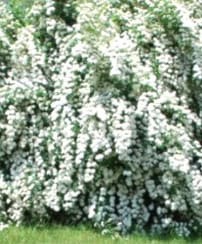 IF YOU HATE waiting for late March to fill the yard with color next February/March, consider planting right now Bridal wreath (Spiraea prunifolia), so it’ll begin establishing good roots). This past Feb/March bloom display was one of the best bloom years in a while! This old fashioned, early-spring flower has been used as bridal flowers for centuries almost world-over. During summers, its green foliage makes a nice backdrop for other bloomers.
IF YOU HATE waiting for late March to fill the yard with color next February/March, consider planting right now Bridal wreath (Spiraea prunifolia), so it’ll begin establishing good roots). This past Feb/March bloom display was one of the best bloom years in a while! This old fashioned, early-spring flower has been used as bridal flowers for centuries almost world-over. During summers, its green foliage makes a nice backdrop for other bloomers.
Bridal wreath doesn’t usually need pruning but doesn’t mind it and now’s the time to do it. It’s starting to set buds for next year’s blooms . Want taller with longer cascades? Prune from sides. Lower and/or wider, prune from top down. It will explode with solid white blooms in February when little else is blooming. Like azaleas, camellias, dogwoods and other spring bloomers, it should never be pruned later in the year. You’ll cut off next Spring’s blooms.
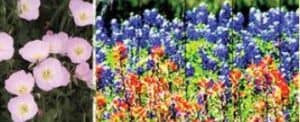 WILDFLOWERS A’COMIN’! A recent quick trip to Sinton (near Corpus Christi) confirmed what folks are saying about this Spring’s wildflower bloom potential. We saw so many pink evening primroses, bluebonnets, Indian Paintbrushes, and other wildflowers in bloom, it was an incredible confirmation of the better-than-usual prediction of the Lady Bird Johnson Wildflower Center in Austin’s recent declaration:
WILDFLOWERS A’COMIN’! A recent quick trip to Sinton (near Corpus Christi) confirmed what folks are saying about this Spring’s wildflower bloom potential. We saw so many pink evening primroses, bluebonnets, Indian Paintbrushes, and other wildflowers in bloom, it was an incredible confirmation of the better-than-usual prediction of the Lady Bird Johnson Wildflower Center in Austin’s recent declaration:
“On a scale from one to 10, this year looks like it could be an eight, for bluebonnets in particular, if not even better,” Also check out: The Houston Chronicle’s bluebonnet-viewing tips.
LEGEND OF THE PINK BLUEBONNET I’ve seen blue, white & red bluebonnets b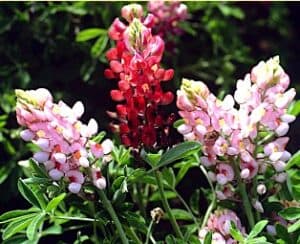 ut never a pink one, tho they do exist. Greg Grant details the full legend on this (link) to Aggie Horticulture website. Fun read!
ut never a pink one, tho they do exist. Greg Grant details the full legend on this (link) to Aggie Horticulture website. Fun read!
(Note: Aggies often claim red bluebonnets pictured here are actually Aggie maroon. Pooh! Anyone can see they’re COUGAR RED!)
 BOUGAINVILLEA NOT JUST FOR BASKETS ANYMORE. I remember as a child blocks-long bougainvilleas covered the ol’ Moody Cotton Compress and Warehouse on Broadway in Galveston. As a young garden writer, I was amazed to discover way back in the ’70s & ’80s that we couldn’t grow these in Houston. Winters too cold. Talk about a huge climate change!
BOUGAINVILLEA NOT JUST FOR BASKETS ANYMORE. I remember as a child blocks-long bougainvilleas covered the ol’ Moody Cotton Compress and Warehouse on Broadway in Galveston. As a young garden writer, I was amazed to discover way back in the ’70s & ’80s that we couldn’t grow these in Houston. Winters too cold. Talk about a huge climate change!
Now — especially in Houston’s inner-city neighborhoods — huge bougainville shrubs dot many yards. That’s where I photographed this one several years ago! I can’t remember where exactly where! But as a lady with a similar one explained to me, the secret is leaves. She piles tons of leaves over the plant base, especially in fall. Not saying works for everyone, but might be fun to try!
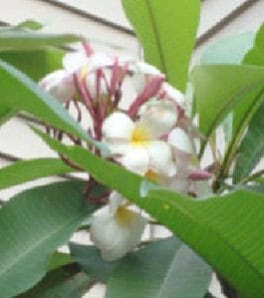 PLUMERIAS, ORCHIDS & BOUGAINVILLEAS have long been plants that were set outside only in summers. This still is best idea if you have treasured plants. Our winters are so rollercoaster these days. But it’s interesting to hear about ones left out that did just fine in years past, like the bougainvillea above. And, at right, JIM & ANNE’S KADLECEK’S two-story high plumeria that lived outside here in SW Houston for years, albeit in a recessed area with protection on three sides.
PLUMERIAS, ORCHIDS & BOUGAINVILLEAS have long been plants that were set outside only in summers. This still is best idea if you have treasured plants. Our winters are so rollercoaster these days. But it’s interesting to hear about ones left out that did just fine in years past, like the bougainvillea above. And, at right, JIM & ANNE’S KADLECEK’S two-story high plumeria that lived outside here in SW Houston for years, albeit in a recessed area with protection on three sides.
 At right is an orchid in a hanging basket hooked to a tree branch. I forgot to bring in one winter. Stayed out there for several years. Bloomed on. Brought it inside because someone told me to. It died. Point is, some plants are like people. They march to their own drummers, no matter what experts say!
At right is an orchid in a hanging basket hooked to a tree branch. I forgot to bring in one winter. Stayed out there for several years. Bloomed on. Brought it inside because someone told me to. It died. Point is, some plants are like people. They march to their own drummers, no matter what experts say!
One way to find good, reliable advice and best plants for this area is to shop our many local specialty plant society and horticultural/plant group sales. These folks love their plants and share our growing challenges. They’ll ask you a lot of questions so they can give you the best possible (free!) advice. I counted 15 different upcoming specialty plant society sales alone in our calendar below, with even more educational events. If you don’t see the plant you’re interested in, just google the plant name + “Houston Society.”
Email me (lazygardenerbrenda@gmail.com) a list of as many local speciality plant groups as I know or to make sure your society’s contact info is on it!
John’s Corner
NEWS FROM THE WONDERFUL WORLD
OF SOIL AND PLANTS # 277
I often get a lot of questions about compost, so here is a quick breakdown. There are no labeling laws in Texas for compost; hence anything can be marketed as compost. However, there is an easy way to protect your family and garden based on selling price.
Compost can be broken into three basic types based on its quality and usage. These are Biological, Commercial, and Industrial.
Biological – This is the highest quality compost and therefore the most beneficial in improving soils, preventing disease, making compost tea, etc. This is the product that experienced gardeners often call black gold because it is so valuable to plants. The bag will have holes in it so that air can enter and the beneficial microbes can breathe and be kept alive. This compost will typically sell retail for $14-20 per bag (40 lb.).
Commercial – This is a middle to lower grade of compost made from sewage sludge, construction debris, high salt manures, etc. It will be in a sealed bag and may have a sour or stale odor. The better manure-based composts may be found here. Often high in salt, hence repeated usage may kill plants or stunt their growth. This compost will typically sell retail for $4.99-8.99 per bag (40 lb.).
Industrial – This is the lowest grade of products called compost (it is NOT a true compost). It is made from industrial wastes like boiler ash. It is often very black and sometimes will rub off in your hand. It often contains fillers like sawdust and rice hulls which are chemically burned black from the industrial waste. It may be extremely alkaline and high in toxic salts. This product will typically sell retail for $2.99-3.99 per bag (40 lb.).
SPONSORSHIP
If you are interested in becoming a sponsor, please contact us at 936-273-1200 or send an e-mail to: lazygardenerandfriends@gmail.com
ABOUT US
BRENDA BEUST SMITH WE KNOW HER BEST AS THE LAZY GARDENER . . . but Brenda Beust Smith is also:
- a national award-winning writer & editor
- a nationally-published writer & photographer
- a national horticultural speaker
- a former Houston Chronicle reporter
When the Chronicle discontinued Brenda’s 45-year-old Lazy Gardener” print column — started in the early ’70s as a fun side-project to reporting, it then ranked as the longestrunning, continuously-published local newspaper column in the Greater Houston area. The name, she says, is not just fun, it’s true. Brenda’s gradual sideways step from reporter into gardening writing led first to an 18-year series of when-to-do-what Lazy Gardener Calendars, then to her Lazy Gardener’s Guide book which morphed into her Lazy Gardener’s Guide on CD, which she now emails free upon request. Brenda became a Harris County Master Gardener and, over the years, served on theboards of many Greater Houston area horticulture organizations. She hosted local radio and TV shows, most notably a 10+-year Lazy Gardener specialty shows on HoustonPBS (Ch. 8) and her call-in “EcoGardening” show on KPFT-FM. For over three decades, Brenda served as Assistant Production Manager of the GARDEN CLUB OF AMERICA’S “BULLETIN” magazine. Although still an active broad-based freelance writer, Brenda’s main focus now is THE LAZY GARDENER & FRIENDS HOUSTON GARDEN NEWSLETTER with John Ferguson and Pablo Hernandez of Nature’s Way Resources. A native of New Orleans and graduate of St. Agnes Academy and the University of Houston, Brenda lives in Humble, TX, and is married to the retired Aldine High School Coach Bill Smith. They have one son, Blake. Regarding this newsletter, Brenda is the lead writer, originator of it and the daily inspiration for it. We so appreciate the way she has made gardening such a fun way to celebrate life together for such a long time.
JOHN FERGUSON John is a native Houstonian and has over 27 years of business experience. He owns Nature’s Way Resources, a composting company that specializes in high quality compost, mulch, and soil mixes. He holds a MS degree in Physics and Geology and is a licensed Soil Scientist in Texas. John has won many awards in horticulture and environmental issues. He represents the composting industry on the Houston-Galveston Area Council for solid waste. His personal garden has been featured in several horticultural books and “Better Homes and Gardens” magazine. His business has been recognized in the Wall Street Journal for the quality and value of their products. He is a member of the Physics Honor Society and many other professional societies. John is is the co-author of the book Organic Management for the Professional. For this newsletter, John contributes articles regularly and is responsible for publishing it.
PABLO HERNANDEZ Pablo Hernandez is the special projects coordinator for Nature’s Way Resources. His realm of responsibilities include: serving as a webmaster, IT support, technical problem solving/troubleshooting, metrics management and quality control. Pablo helps this newsletter happen from a technical support standpoint.
Download the Newsletter with Our Events Calendar Below!
